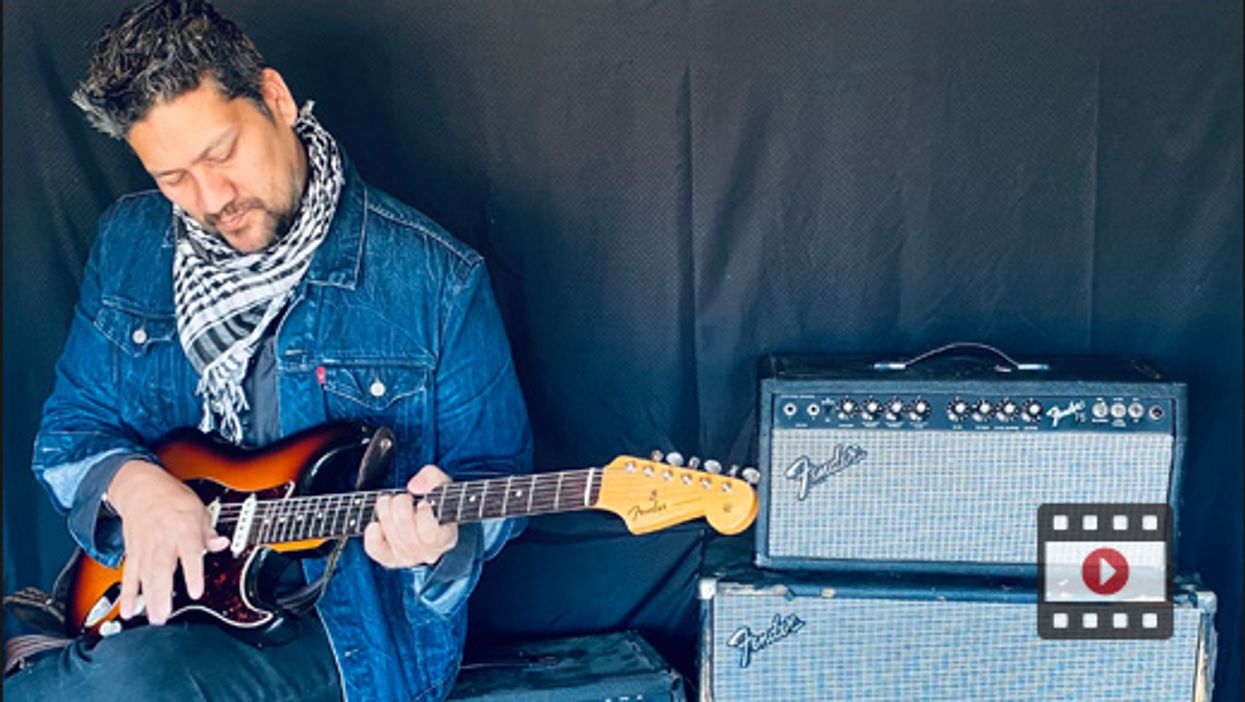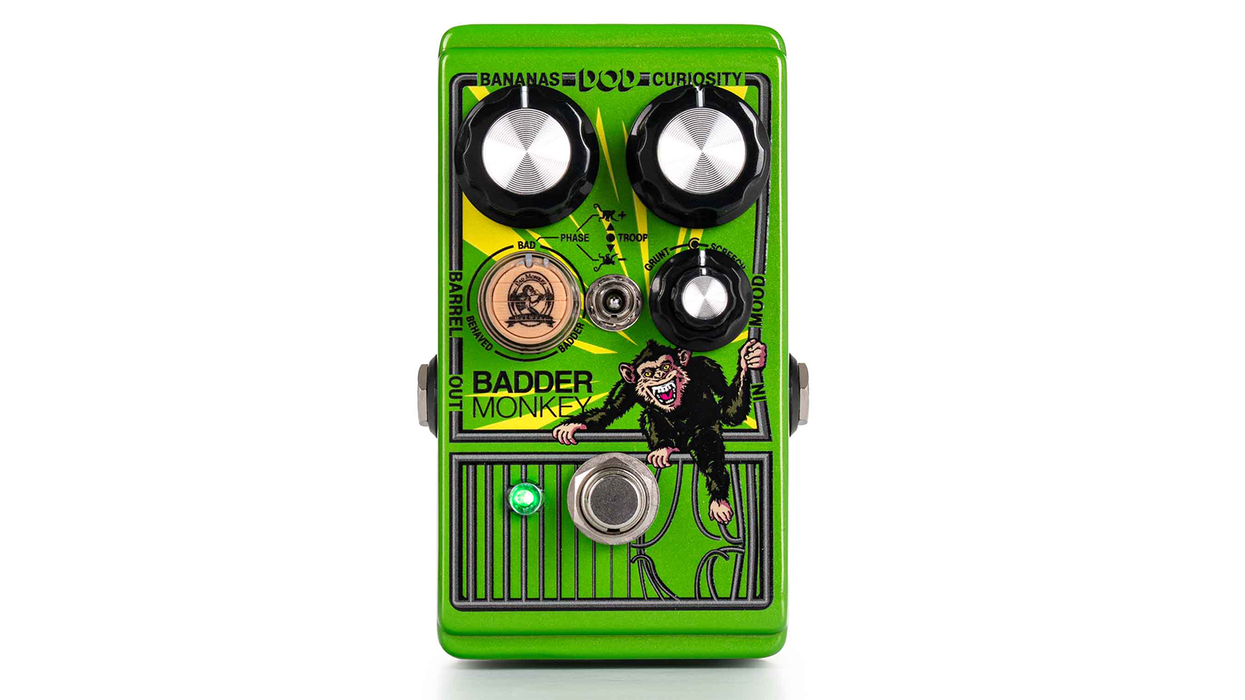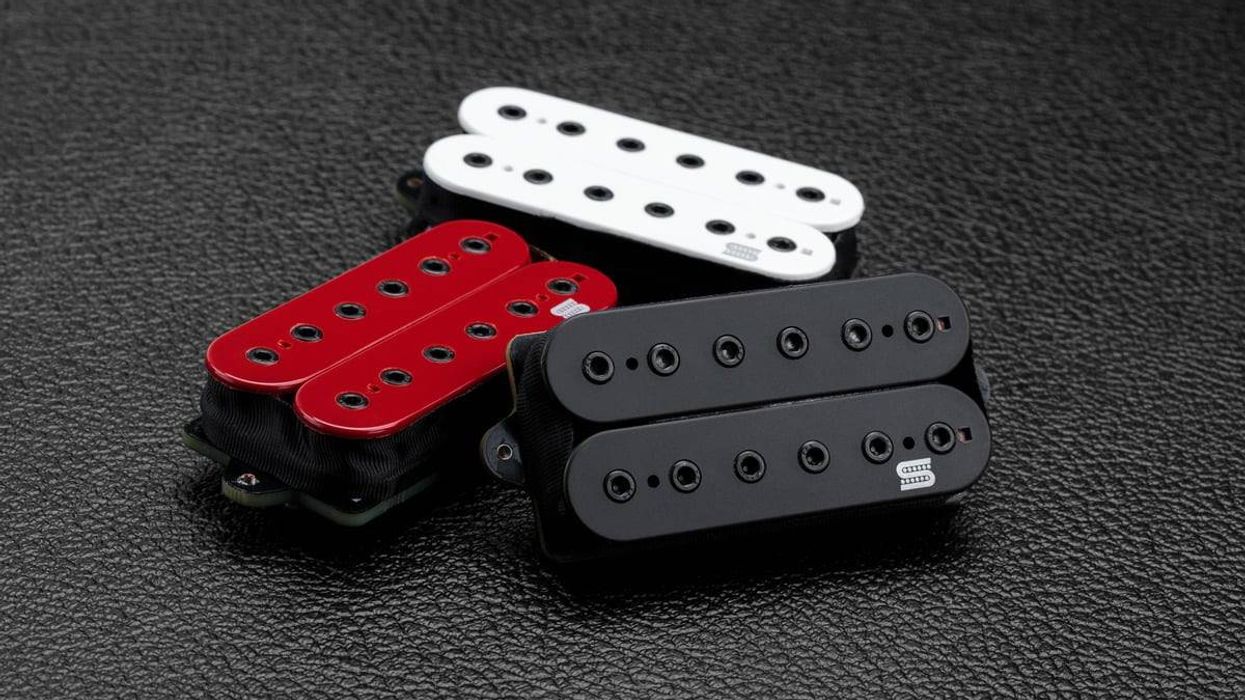from his own heart or from that of the Nakota Nation, to which he belongs.
“I learned a lot about guitars, amps, and pedals from my dad," Nanji explains by phone from his home on the Yankton Sioux Reservation in South Dakota, where he grew up and still lives—at least when he's not touring the world with Indigenous or as an essential performer on the Experience Hendrix Tours. His father, Greg Zephier Sr., was also an accomplished guitarist and a member of the band the Vanishing Americans, who opened for Bonnie Raitt and other notables.
“My dad would bring home new gear and new music all the time, and once he brought home a Fender 75 and said, 'Hey, check this out,' and I was hooked," Nanji says of his favorite-model amp. “It sounded different from the other Fenders we had: a little darker, a little warmer, a little fatter, and bigger."
Currently Nanji owns two 75s: a 1x15 combo and a head, which he uses to power a Fender 4x12. “I had a 1x12 combo first, but I got the 15 because it has a little more kick with a bigger low," he relates. “Sometimes I use both of my 75s in the studio along with my Super Reverb, with its four 10s. The combination of all three is really awesome."
The 75 series has more functions than typical early '80s Fenders and were among the last designs for the company by famed engineer Ed Jahns, who spearheaded Fullerton amp building before Paul Rivera took the reins in 1982. Both men had a similar bent for innovation, and their designs are sometimes confused for one another's.
Jahns designed the first Fender amps with push/pull tone controls and was also behind the legendary 435-watt Fender 400 PS. The 75 was made from 1980 to 1982 and can scale down to 15 watts with the flip of a toggle. The faceplate controls, from left to right, are a bright switch, a volume dial for the clean channel, treble, mid, and bass EQs—all with pull-out boost, a lead drive dial, reverb, a lead level, and a master volume. The tube array is three 12AX7s, two 12AT7s, and two 6L6 power tubes, but the rectifier is solid-state. The combos came with 8-ohm Electro-Voice or Fender Blue Label speakers made by Eminence. These amps aren't as collectible as many vintage Fenders, despite their sonic virtues, and can be found for $500 to $1,300, depending on condition.
Nanji likes to use only the lead side of his 75s and sets the dials on 5—all the way across. “Right in the middle is where the sweet sound is," he notes. “I like to keep the core tone clean as much as I can, and then use a few pedals to overdrive it." Although a TS808 is his longtime go-to, he also favors a Mojo Hand Tone Factor and a vintage Fuzz Face for snarl options, and a Prescription Electronics COB (Clean Octave Blend) fuzz for more radical colors.
To hear Nanji's potent tone in full, listen to “C'mon Suzie" from 2003's Indigenous. In addition to his 75s, that track features the rotating sound of a Leslie cabinet—like Hendrix used on “Little Wing." (Onstage, Nanji gets that swirl from a Tinsley Audio Sir Henry pedal.) The guitar on that song is the one that's always over his shoulders: a '60s reissue Stratocaster, which recently got a Custom Shop neck that was a gift from Nanji's Hendrix tour compatriot, Kenny Wayne Shepherd.
The fat, gorgeous guitar tones on Indigenous' “C'mon Suzie" are among Mato Nanji's favorite sounds that he's recorded.
That first time I heard Nanji live, he was using his 75 head on two 4x12 Fender cabs, but in recent years he's relegated his 40-year-old amps to the studio. On the Hendrix tours, he powers up the Marshall JCM800 that's provided. “Everybody says it's really loud, so they block it off with Plexiglass, but I can't tell when I'm onstage and feeling it," he says, chuckling. Just before touring stopped, he'd been using a Legacy Steve Vai signature head—a gift from Carvin—with Indigenous, for its reliability and the Marshall-like tone of its EL34 power tubes.
But he's lost no fondness for his 75s. “I'm in and out of the studio working on songs as much as I can, although the studio where I work is shut down a lot, and there aren't many alternatives in South Dakota," he relates. “But I'm pretty close to finishing an album that I'd like to get out next year."























![Rig Rundown: AFI [2025]](https://www.premierguitar.com/media-library/youtube.jpg?id=62064741&width=1245&height=700&quality=70&coordinates=0%2C0%2C0%2C0)




















 Zach loves his Sovtek Mig 60 head, which he plays through a cab he built himself at a pipe-organ shop in Denver. Every glue joint is lined with thin leather for maximum air tightness, and it’s stocked with Celestion G12M Greenback speakers.
Zach loves his Sovtek Mig 60 head, which he plays through a cab he built himself at a pipe-organ shop in Denver. Every glue joint is lined with thin leather for maximum air tightness, and it’s stocked with Celestion G12M Greenback speakers.











